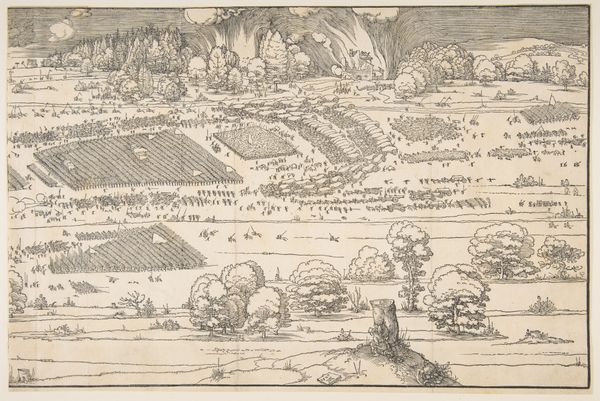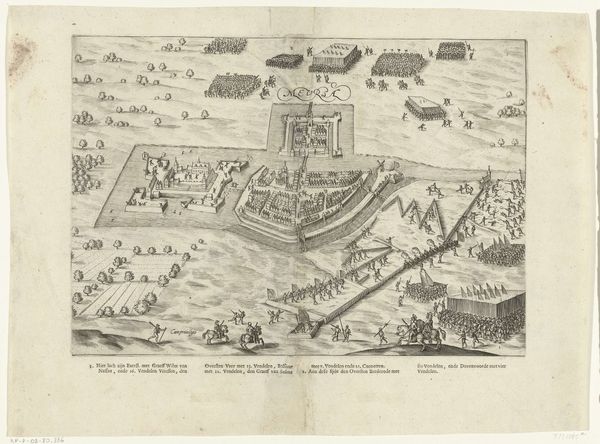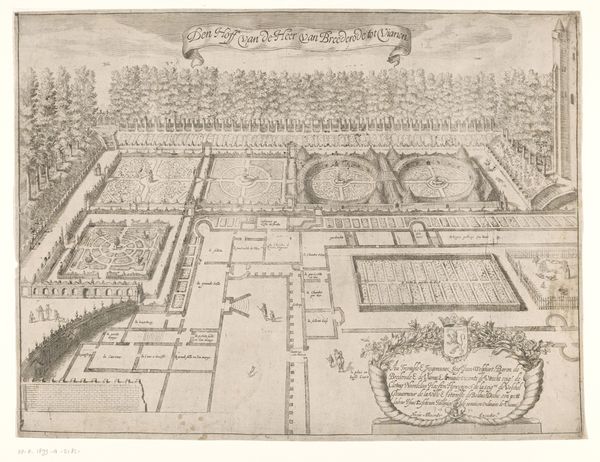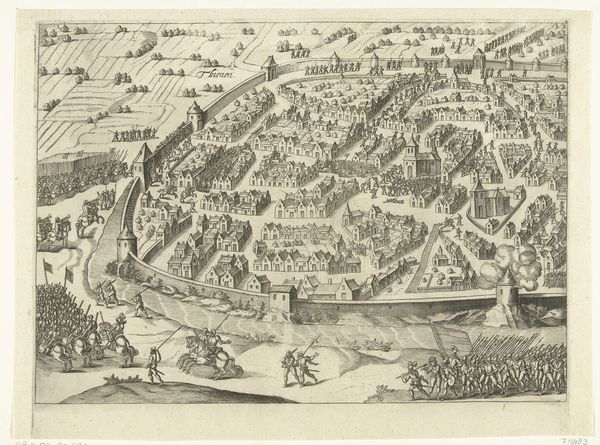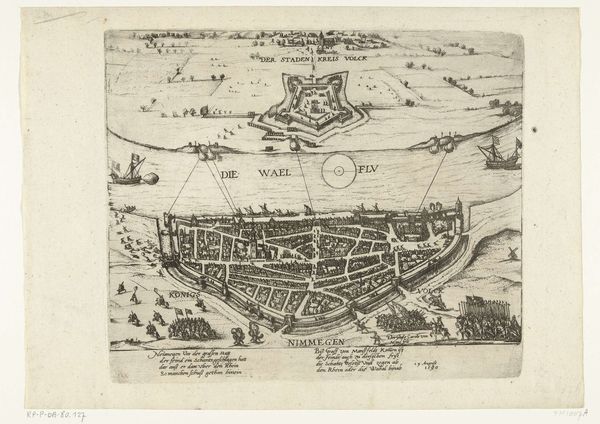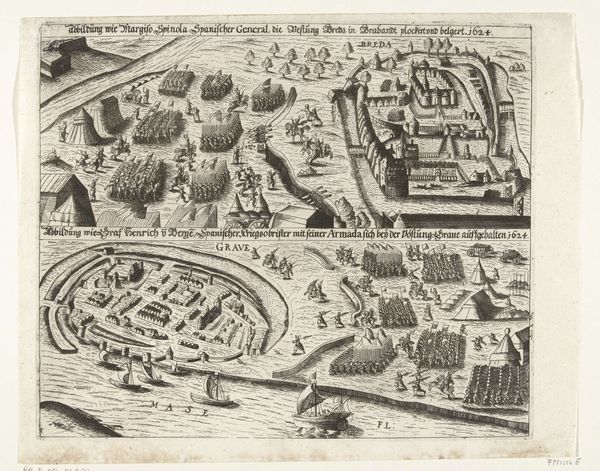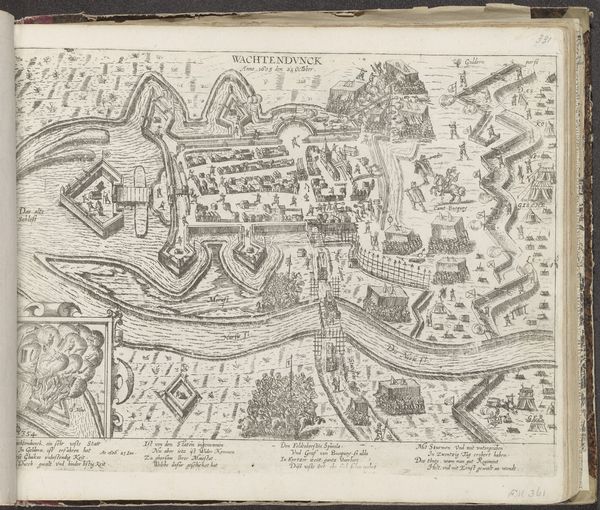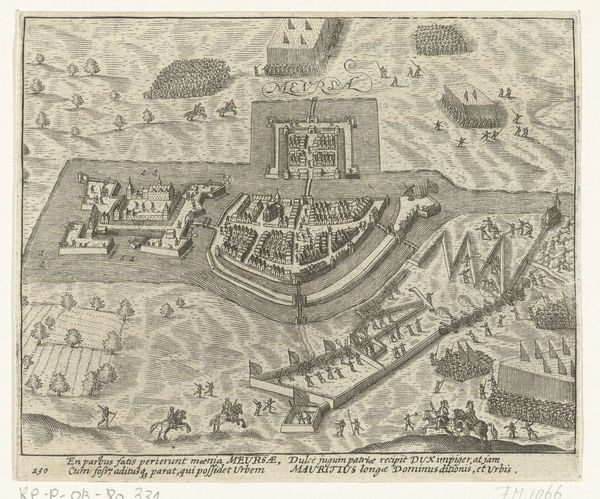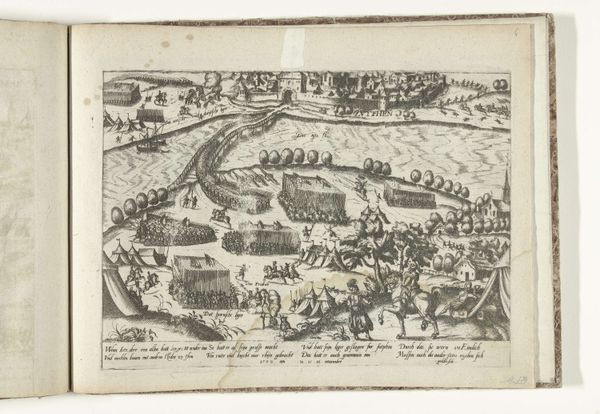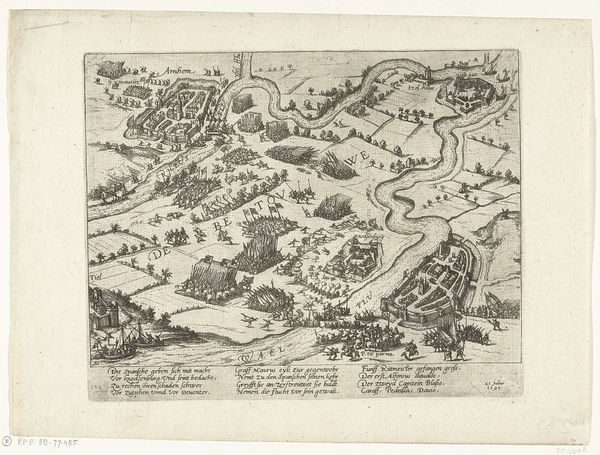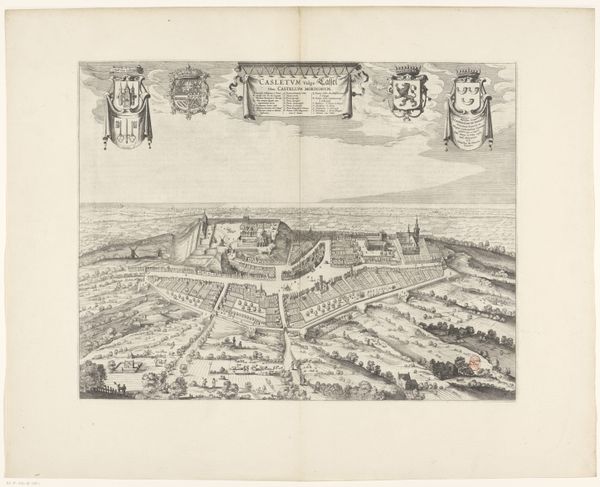
print, engraving
#
dutch-golden-age
# print
#
landscape
#
cityscape
#
engraving
Dimensions: height 199 mm, width 321 mm
Copyright: Rijks Museum: Open Domain
This print, dating to 1620, and made by an anonymous artist, shows Maurits' construction of the sconce Papenmuts in the Rhine. The process used here is engraving, which involves cutting lines into a metal plate. Ink is then applied to the plate, and the surface is wiped clean, leaving ink only in the incised lines. Paper is then pressed against the plate, transferring the image. Engraving allows for precise, detailed images, perfect for technical illustrations like this one. The sharp, clean lines of the engraving capture the geometry of the sconce. It also shows the surrounding landscape with remarkable clarity. The lines of the river, the shapes of the buildings, and even the tiny figures within the sconce, are all carefully delineated. Consider the labor involved: the planning and building of the sconce itself, of course. But also, the skilled work of the engraver. By attending to the materials and processes behind this image, we can understand it as a product of its time. It shows the intersection of military engineering, artistic skill, and the technologies of reproduction.
Comments
No comments
Be the first to comment and join the conversation on the ultimate creative platform.

